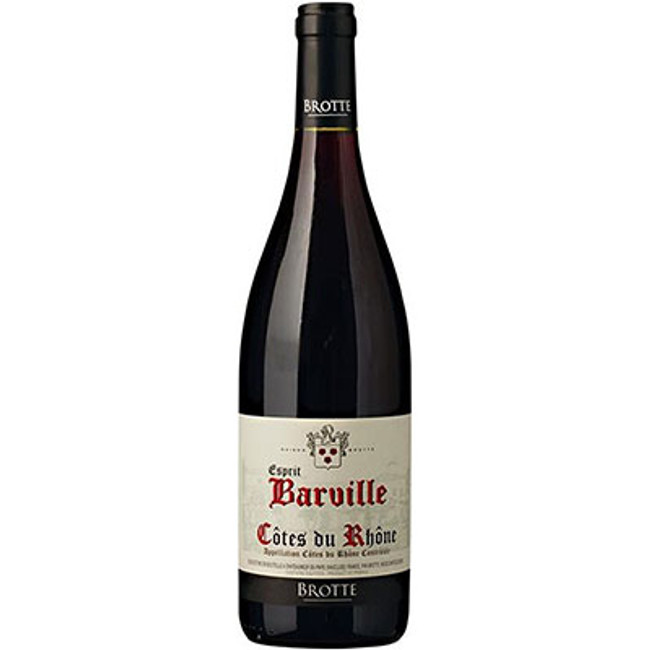Outstanding Châteauneuf-du-Pape from a great vintage with a bit of age on it – perfect for near-term enjoyment.
“Restrained but ripe, this elegant wine offers concentrated black-cherry and plum flavors shaded in tones of granite, licorice and dried herb. It's rich and expansive on the palate, with a warm, comforting heft. Fresh acidity and fine-grained tannins frame a long finish. It's lovely now but likely to show best from 2020.” 93 Points – Wine Enthusiast
“What should be a terrific value, the 2015 Châteauneuf du Pape Domaine Barville checks in as a mix of 80% Grenache, 15% Syrah and 5% Mourvèdre that was completely destemmed and aged in a combination of foudre, new barrels, old barrels and concrete tanks. It’s a charming, ripe, even sexy barrel sample that has terrific notes of plums, blackberries, garrigue and violets. Drink this soft, pleasure-bent beauty anytime over the coming 4-6 years.” 91-93 Points – Parker’s Wine Advocate
Domaine Barville is Laurent Brotte’s family estate, in the name of ancestors, the Barville. The 15ha vineyard is situated on the west side of Châteauneuf-du-Pape, and is composed of 7 parcels spread over two of the best areas of the appellation: Clay and pebbles at ‘Pradel’ and shattered limestone at ‘Beaurenard’. The Brotte's vines boast an average age of 35 years and, at an elevation of 100m, dominate the Rhône River which, with the local wind ‘The Mistral’, brings an exceptional, healthy microclimate. A very warm climate and south facing position are ideal for perfect maturation and concentration of the berries.
Sustainable viticulture, de-budding, de-leafing and green harvest to limit the yield and increase the quality. Hand-picking into small cases and fast transportation to the winery to avoid berries’ crushing and oxidation. Destemmed with, gentle crushing. Fermentation at 28°C, followed by a 3 week maceration. The tannic Grenache, Syrah and Mourvèdre are aged in French oak barrels (1/3 new, 1/3 one wine-old, 1/3 two wine-old), while softer Grenache is matured in concrete tanks and 100-year-old oak vats to preserve the fruit character. Bottling takes place in March, after more than a year of aging and a light filtering.








